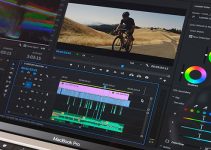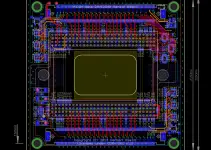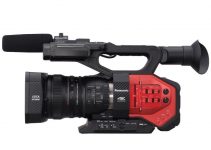As a rule, full-frame cameras have always been at the upper end of the price spectrum and for good reason. Not only are they sporting a sensor that’s considered to be an industry standard for more than a hundred years already but they also outweigh the smaller APS-C counterparts with the unique visual aesthetics, broader dynamic range, high-end features, and of course, superior low light performance.
But with the fast advancements in the ever-evolving camera technology, on the one hand, and the stiff competition, on the other, there are more and more devices that could easily fit in the category covered in this article. So, which are the cheapest full-frame cameras for shooting video one can get these days? That’s exactly what we are about to find out right away.
Canon EOS RP (B&H, Amazon)
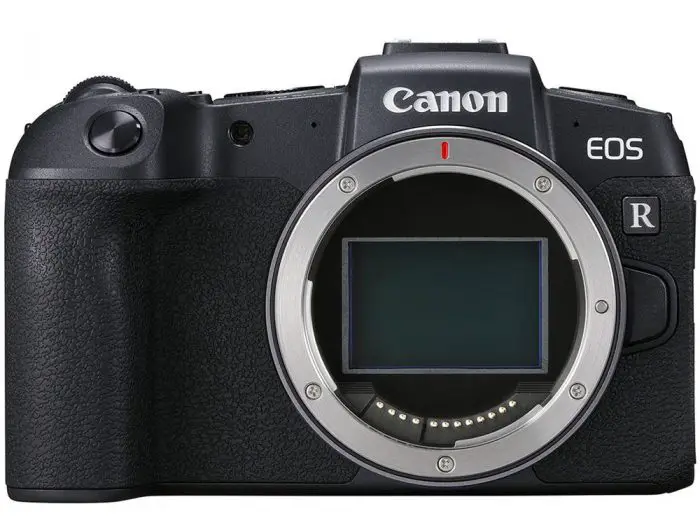
It’s the entry-level model in the new “R” full-frame mirrorless lineup and one of the cheapest full-frame offerings on the market right now. The EOS RP sports a 26.2 megapixel full-frame CMOS sensor while being capable of shooting 4K (UHD) video up to 30fps. You can capture video with 4:2:0 sampling and 8-bit color depth in-camera as well as 4:2:2 8-bit video if you use an external recorder.
The unit is powered by the DIGIC 8 image processor and also features the familiar Dual Pixel CMOS Auto Focus (AF) system with 4,779 manually selectable AF points and a wide AF coverage area of 88 percent horizontal and 100 percent vertical. Other noteworthy features include a fully articulating touchscreen, 2.36m-Dot OLED Electronic Viewfinder, Wi-Fi and Bluetooth connectivity, a mic input as well as headphones out. The EOS RP also has a single SD card slot and uses the cheaper and smaller Canon LP-E17 battery.
Keep in mind, though, that the camera doesn’t have Canon LOG, plus the Dual Pixel AF technology does not work in 4K. You’ll also need to deal with a significant crop when filming in 4K UHD, just like on the EOS R. Nevertheless, the Canon EOS RP is a fantastic all-around entry-level full-frame camera capable of producing excellent image quality with exceptional focusing performance in a small and compact body.
Canon EOS RP Highlights
- 26.2 Megapixel Full-Frame CMOS Sensor
- DIGIC 8 Image Processor
- Dual Pixel CMOS AF (in Full HD only, not in 4K!!!)
- 4K (3840 x 2160) at 25, 23.98 fps Intra Frame
- 4K Time-lapse (16:9) 3840 x 2160 at 29.97, 25 fps All-I
- 1920 x 1080 (59.94, 50, 29.97, 25 fps) intra frame
- & intra frame lite (29.97, 25 fps)
- 1280 x 720 (59.94, 29.97, 50, 25 fps) intra frame
- 2.36m-Dot OLED Electronic Viewfinder
- Fully-Articulating Touchscreen LCD
- Mic Input & Headphones Out
- Wi-Fi and Bluetooth
- Records to 1 x SD card
- Battery Power via 1 x LP-E17 battery
- Included EF/EF-S to RF Lens adapter in most markets
Sigma fp (B&H, Amazon)
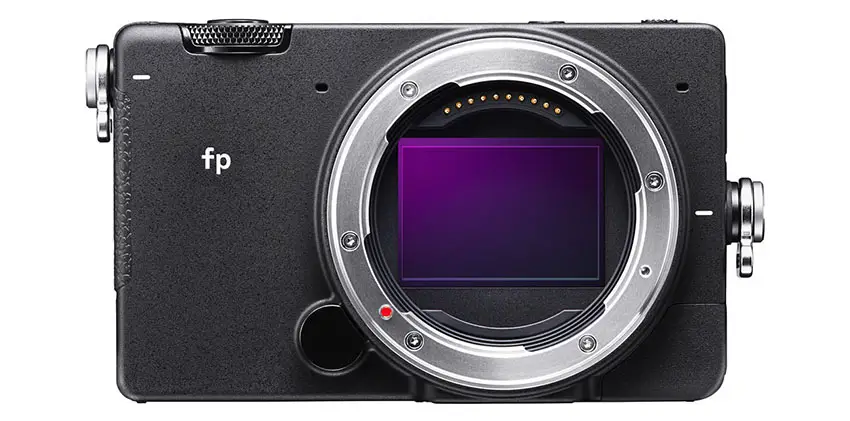
The Sigma fp ultra-pocketable 4K full-frame mirrorless camera is another enticing offering on the list. It comes equipped with a 24.6 megapixel 35mm Bayer full-frame sensor capable of shooting internal 4K (UHD) video up to 30fps using H.264 to a UHS-II SDXC card slot. Unlike the EOS RP, however, the camera supports external recording in 12-bit CinemaDNG format at a maximum resolution of 4K UHD/24fps.
Even though it’s a hybrid stills/video platform, the Sigma fp has clearly been designed with filmmakers in mind. With the “Director’s Viewfinder” function, for instance, shooters can simulate different angles of view and how an image looks in some high-end cinema cameras such as the ARRI ALEXA LF and RED MONSTRO 8K.
Currently, the Sigma fp is the smallest and lightest full-frame mirrorless digital camera with a compact body that weighs under one pound. For less than $2,000, you can get an extremely capable 4K camera with modular design and highly demanded Raw video capabilities alongside 49-Point AF System, BSI Bayer CMOS sensor, electronic image stabilization, and Leica’s L-mount lens interface.
Sigma fp Highlights
- 24.6MP Full-Frame BSI Bayer CMOS Sensor
- Sigma L-Mount
- ISO range: 100 to 25,600 (expandable to ISO 6-102,400)
- Electronic Shutter
- 49-Point AF System
- 3.15″ 2.1m-dot LCD touchscreen
- Recording settings: UHD 4K (3840 x 2160) at 23.976p/25p/29.97p
Full HD (1920 x 1080) at 23.976p/25p/29.97p/59.94p/100p/119.88p
- 12-bit CinemaDNG external recording
- micro-HDMI port
- USB 3.1 Gen 1 Type-C port
- built-in stereo microphone
- 3.5mm mic input
- Single Slot SD/SDHC/SDXC (UHS-II)
- Size: (W x H x D) 4.43 x 2.75 x 1.78″ / 112.6 x 69.9 x 45.3 mm
- Weight: 14.89 oz / 422 g
Nikon Z6 (B&H, Amazon)
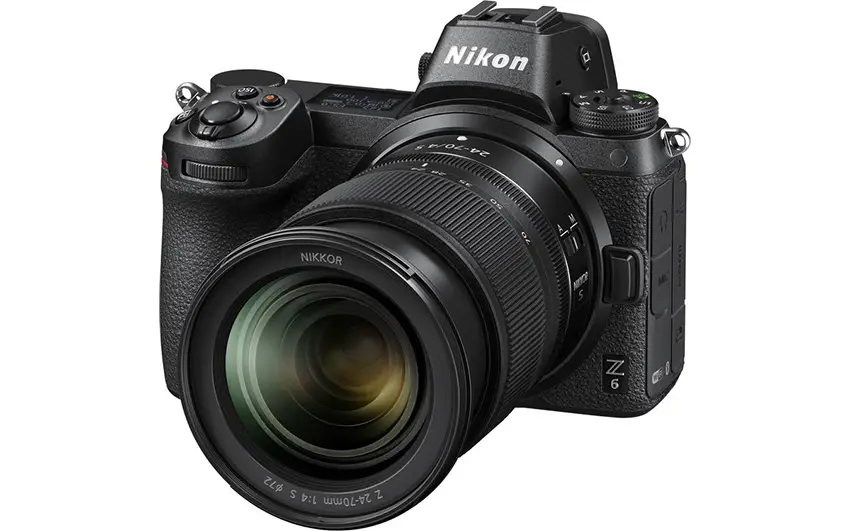
Touted as an all-around, high-speed, low-light camera, the Nikon Z6 features a back-illuminated FX-format 24.5MP BSI CMOS sensor and the EXPEED 6 Image Processing Engine with a native sensitivity range of ISO 100-51200. Additionally, the unit boasts an advanced phase-detect autofocus system using 273 points that can also be utilized when shooting video.
Other than that, the Z6 can shoot 4K Ultra HD at up to 30fps while offering a decent number of neat video features such as built-in 5-Axis Vibration Reduction, 10-bit N-Log HDMI output, Active D-Lighting, 8K timelapse mode, focus peaking, timecode sync support, as well as 120fps slow-motion capabilities when filming in 1080p.
Along with the Nikon Z7, the Z6 is the very first full-frame mirrorless camera that is capable of outputting a stream of RAW data via a 4K HDMI cable to the Ninja V thus making the recording of 12-bit uncompressed video in 4K UHD resolution a reality while giving users complete creative control over the captured footage.
Nikon Z6 Highlights
- 24.5MP FX-Format BSI CMOS Sensor
- EXPEED 6 Image Processing Engine
- UHD 4K30 Video; N-Log & 10-Bit HDMI Out
- 273-Point Phase-Detect AF System
- Built-In 5-Axis Vibration Reduction
- 0.80x 3.6m-Dot EVF with NIKKOR Optics
- 3.2″ 2.1m-Dot Tilting Touchscreen LCD
- 12 fps Shooting; ISO 100-51200
- Top-Panel Dot-Matrix OLED; XQD Card Slot
- Wi-Fi and Bluetooth
Sony A7III (B&H, Amazon)
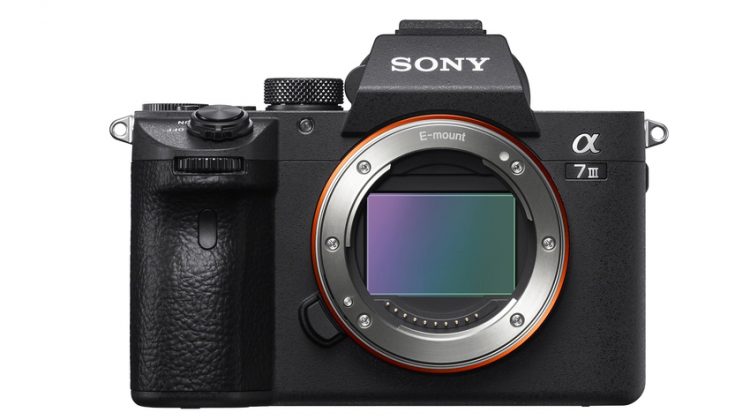
Announced back in February 2018, the Sony A7III is one of the best selling full-frame mirrorless offerings by Sony after the unrivaled success of the ubiquitous A7S. The camera features a 24.2 megapixel back-illuminated Exmor R CMOS sensor, which is paired with a front-end LSI that effectively doubles the readout speed of the image sensor. No wonder it has an impressive ISO range of 100 – 51200 (expandable to ISO 50 – 204,800 for still images) that could hardly be beaten even by the latest offerings in the segment.
Regarding video capabilities, the Sony A7III records 4K UHD (3840 x 2160) up to 30p (24 and 25p available) with HLG and S-log3 and S-log2 gamma profiles. The A7 III downsamples from an approx. 6K readout from the full sensor for a crispy clear UHD. The codec used on board is the 8bit 4:2:0 Long-GOP XAVC-S, so no 10bit here. In Full HD you can record continuous slow motion up to 120fps. The A7 III also features dual SD card slots.
Sony A7III Highlights
- 24MP Full-Frame Exmor R BSI CMOS Sensor
- BIONZ X Image Processor & Front-End LSI
- 693-Point Hybrid AF System
- UHD 4K30p Video with HLG & S-Log3 Gammas
- 2.36m-Dot Tru-Finder OLED EVF
- 3.0″ 922k-Dot Tilting Touchscreen LCD
- 5-Axis SteadyShot INSIDE Stabilization
- ISO 204800 and 10 fps Shooting
- Built-In Wi-Fi and NFC, Dual SD Slots
- USB Type-C Port, Weather-Sealed Design
Sony A7S (B&H, Amazon)
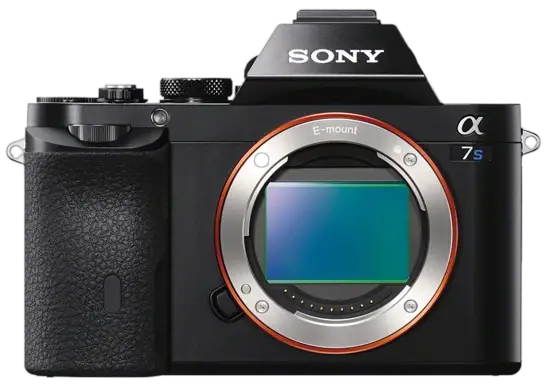
Even though it’s almost six years old already, the Sony A7S deserves its place on this list without any doubt. Sure, it’s only capable of shooting 1080p video internally using the high-quality XAVC S codec, but let’s not forget that it can also output uncompressed 4:2:2 UHD 4K video to an optional external recorder over HDMI.
Plus, it features S-Log2 for capturing the maximum dynamic range of the sensor along with the stunning native sensitivity range from ISO 100-102400 (further expandable to ISO 50-409600) which makes it one of the best low-light mirrorless cameras even by today’s standards.
Sony A7S Highlights
- 12.2MP Full-Frame Exmor CMOS Sensor
- BIONZ X Image Processor
- 3.0″ 921.6k-Dot Tilting LCD Monitor
- 0.5″ XGA OLED electronic viewfinder
- 1920 x 1080 (60p/24p) internal recording using XAVC S codec
- Customizable Color Profiles and S-Log2 Gamma
- Uncompressed 4:2:2 UHD 4K video to an optional external recorder
- 3.5mm microphone input jack and headphone jack
- Built-In Wi-Fi Connectivity with NFC
Ultimately, all five offerings on this list will set you back less than $2,000 which combined with the full-frame sensor, 4K video capabilities, excellent low light performance, and a plethora of professional video features makes them more than capable entry-level mirrorless cameras that will definitely give you the best bang for your buck.
Disclaimer: As an Amazon Associate partner and participant in B&H and Adorama Affiliate programmes, we earn a small comission from each purchase made through the affiliate links listed above at no additional cost to you.


